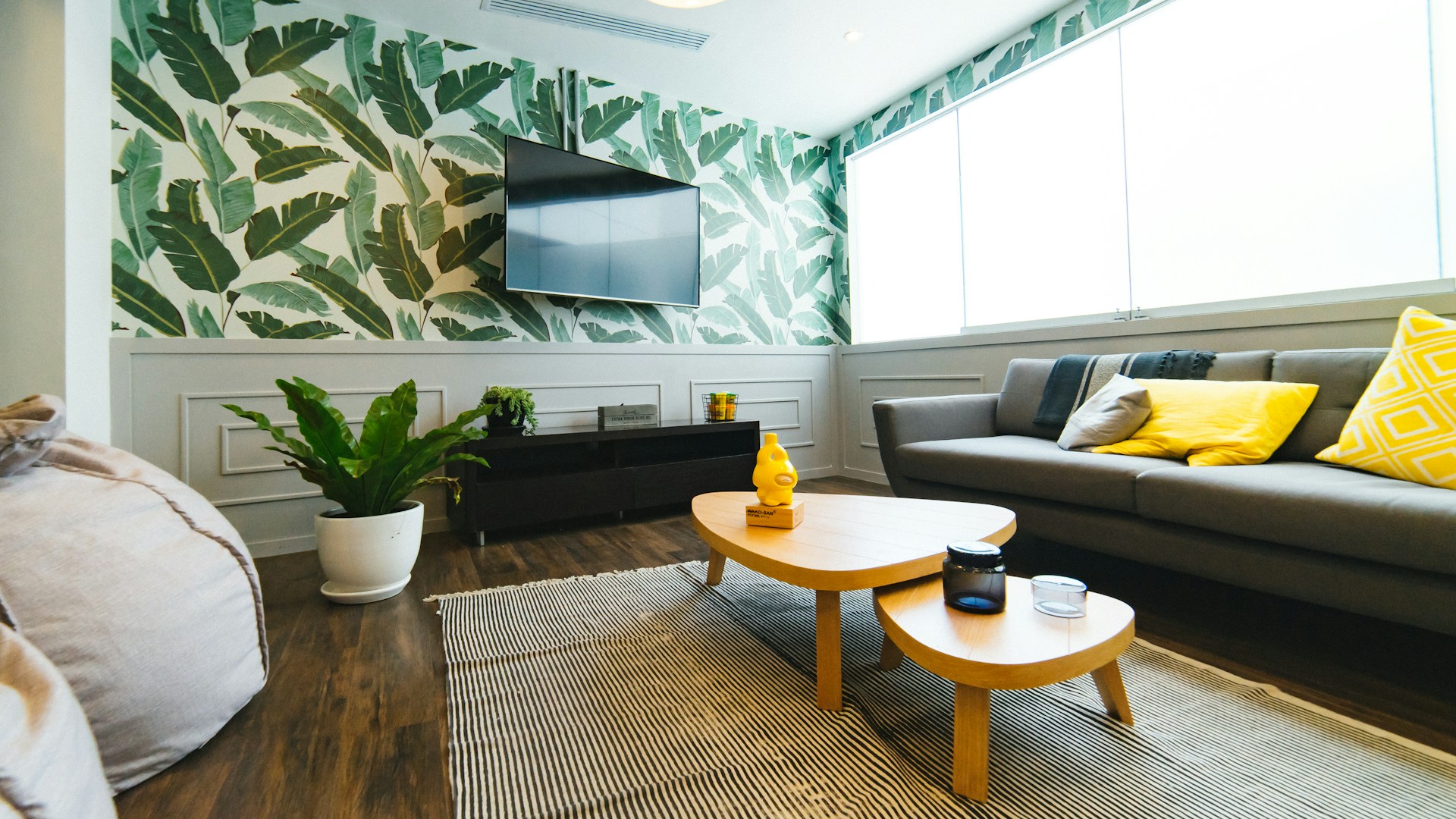The way your home is designed and decorated can have a profound impact on your emotions and overall wellbeing. Many people don’t realize the impact their environment can have on their emotions. This article will delve into the psychology of space, exploring how elements of interior design – from color schemes to furniture placement – can influence mood.
The Connection between Design and Psychology
There is a deep-rooted connection between design and psychology which prominently features in our daily lives. Our homes, the most personal of spaces, are no exception. Interior design, often viewed as simply aesthetic decisions regarding decor, carries a significant psychological weight. It’s not only about how a room looks, but also how it makes you feel.
Lire également : Plant-based home cleaning products: a natural approach
As you transition through different rooms, you might notice a shift in your mood. Some spaces may evoke a sense of tranquility, while others may inspire creativity or social interaction. This emotional response isn’t arbitrary; it’s a result of careful design choices, such as the layout, color scheme, and type of furniture.
The Influence of Color on Mood
It’s no secret that colors can influence our moods. Researchers have found time and time again that certain hues have particular psychological effects. Some colors can calm us down, others stir us up, and some even make us feel more comfortable.
A voir aussi : Vintage record rooms: designing a space for music lovers
For example, blues and greens are typically associated with tranquility and relaxation, and are commonly used in bedrooms and living rooms where people generally want to unwind. On the other hand, bold colors like red or orange are energizing and stimulating, and are ideal for spaces where you want to inspire activity and conversation, like the dining room or kitchen.
Choosing the right colors for your home isn’t just about personal preference. It’s about understanding how different shades can affect your mood and applying this knowledge to create a space that enhances your wellbeing.
The Role of Furniture in Creating Space
Furniture isn’t just functional; it also plays a crucial role in shaping the character of a room and influencing how we interact with the space. The placement of furniture can create different pathways and viewpoints, leading our eyes and directing our movements through a room.
Furniture that is arranged symmetrically often gives off a sense of balance and calmness. In contrast, an asymmetrical layout can create a dynamic and exciting atmosphere. The style and quality of the furniture can also evoke different moods. High-end, sleek furniture may make a space feel more formal or sophisticated, while rustic, worn-in pieces can create a cozy, welcoming ambiance.
Ultimately, the way furniture is arranged in your home can either promote social interaction and movement or create a quiet, introspective space.
How Natural Light Affects Mood
Natural light is another key factor affecting our moods. Spaces that are well lit with sunlight are often perceived as more cheerful and inviting. Natural light boosts our mood, makes us feel more alert, and can even improve our health by regulating our circadian rhythm, our body’s natural sleep-wake cycle.
Well-placed windows, skylights, or glass doors can flood a room with natural light and significantly transform how the space feels. Conversely, rooms with minimal natural light can feel gloomy and uninviting. However, this can be counterbalanced by incorporating artificial light sources, such as table lamps, ceiling fixtures, or candles, to create a warm and cozy atmosphere.
Using Elements of Design to Influence Mood
In addition to color, furniture, and light, there are numerous other elements of design that can be used to influence the mood of a room. Textures, for instance, carry a tactile appeal that can significantly impact how a space feels. Rough surfaces such as burlap and brick can make a room feel cozy and rustic, while smooth textures like satin or marble can create a sense of luxury and refinement.
Patterns can either energize or calm a space, depending on their complexity. Simple, repetitive patterns tend to be soothing, while complex, random patterns can be stimulating.
Even the size and scale of a room play a part in creating mood. High ceilings can make a room feel grand and airy, while low ceilings create a more intimate and cozy atmosphere.
In conclusion, every element of interior design – from the color of the walls to the placement of furniture – has the potential to affect our moods. By understanding the psychology of space, you can purposefully design your home to evoke the feelings and ambiance you desire.
Incorporating Biophilic Design and Feng Shui Principles
Biophilic design and feng shui are two design approaches that can have profound effects on your emotional wellbeing. Biophilic design is a trend in architecture and interior design that aims to connect people more closely to nature. It is based on the concept that humans have an innate tendency to seek connections with nature and other forms of life. This design approach employs natural elements like plants, water, and sunlight in indoor spaces, and it is a way to improve mood and reduce stress levels.
Incorporating natural elements in your home can create a welcoming and calming environment. For instance, the presence of plants can create a calming ambiance and can also help purify the air. Water features, such as a small indoor fountain, can provide a sense of tranquility and peace. Exposure to natural light and views of the outdoors can also contribute to enhanced mental health by elevating mood and reducing stress.
Similarly, feng shui, an ancient Chinese art of placement, aims to optimize the flow of energy, or ‘chi’, within a space. Feng shui principles suggest that how we arrange our living environment can affect our fortunes, health, and overall wellbeing. This can be as simple as positioning your bed to face a certain direction or as complex as aligning your entire home layout to harmonize with nature.
In essence, both biophilic design and feng shui aim to create a harmonious and balanced environment that promotes wellbeing, enhancing the connection between design psychology and space.
Concluding Thoughts on Environmental Psychology and Space Design
Design is not merely about aesthetics; it’s a vital component of our mental and emotional wellbeing. The psychology of space suggests that elements of interior design, right from the color scheme, furniture arrangement, use of natural light, and addition of natural elements, carry a deep psychological impact. How we feel in our homes, whether we are soothed, stimulated, or inspired, can be greatly influenced by these design elements.
Whether it’s the calming blue light in your living room, the stimulating pattern on your dining room rug, the tranquil feng shui layout of your bedroom, or the invigorating natural elements in your home office, every design decision plays a role in shaping your mood and emotional health.
As interior designers and homeowners, understanding the principles of environmental psychology can provide valuable insights into creating spaces that not only look good but also improve mood and wellbeing. The ultimate goal is to create a living environment that complements and enhances our lifestyle and emotional health, making our homes a true sanctuary.
In an era where mental health is rightfully gaining more emphasis, the role of our environment, particularly our homes, cannot be underestimated. The psychology of space provides us with the tools to create environments that are not just beautiful, but also emotionally fulfilling and conducive to our mental wellbeing.






